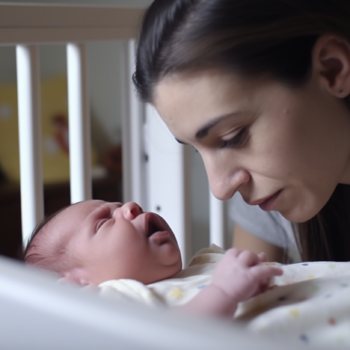Are you trying to sleep train your little one and wondering if it's actually working? It's natural to have doubts and questions during this process. There are a few signs you can look for to determine if sleep training is effective. Firstly, if your baby falls asleep independently and without much fuss, it's a positive sign. Additionally, if they sleep for longer stretches and wake up well-rested, it's a good indicator that sleep training is working. Consistency is key, so if your child consistently follows their sleep schedule and bedtime routine, it shows progress. Furthermore, if your little one is more alert and happy during wake times, it suggests they are getting sufficient quality sleep. While every child is different, these signs can help you gauge the success of your sleep training efforts.
Tag: sleep training success
Top Sleep Training Methods: A Comprehensive Guide for a Restful Night’s Sleep
If you're struggling with your little one's sleep patterns, you're not alone. Sleep training can be a game-changer for both parents and babies. There are several tried and tested methods to help your child develop healthy sleep habits. The Ferber method involves gradually increasing time between comforting visits, while the Weissbluth approach emphasizes creating a consistent bedtime routine. Another popular method is the fading technique, which gradually reduces parental presence at bedtime. The cry-it-out method, though controversial, involves allowing your baby to self-soothe without interference. No matter which sleep training method you choose, consistency and patience are key. Remember, it's important to find an approach that aligns with your parenting style and your child's unique needs. With time and a little perseverance, you can help your child develop the gift of sound sleep.
The Ultimate Guide to Sleep Training a Toddler: How Long Does It Take?
Sleep training a toddler can be a daunting task for any parent. The duration of the process can vary depending on several factors such as the child's age, temperament, and sleep habits. Typically, it takes around 2-4 weeks of consistent effort to establish a healthy sleep routine for your toddler. However, it's important to note that every child is unique, and some may take longer or shorter than others. It's crucial to have a well-planned approach and stick to it with patience and consistency. Sleep training can be challenging and tiring, but it's worthwhile in the long run, as it helps your child develop good sleep habits that will benefit them throughout their life.
A Beginner’s Guide to Sleep Training for Infants: Benefits and Techniques Explained
Sleep training for infants is a process of teaching babies how to sleep independently through the night. It involves gradually reducing the presence and intervention of parents during bedtime routines. Sleep training may include methods such as the Ferber method, the cry it out method, or the chair method, and involves establishing a consistent sleep schedule and routine. While sleep training can be controversial, it can be a helpful solution for parents who are struggling with sleep deprivation and are looking for a way to help their baby get the rest they need. It is important to note that sleep training should only be done when the baby is developmentally ready and should always be done under the guidance of a pediatrician.

